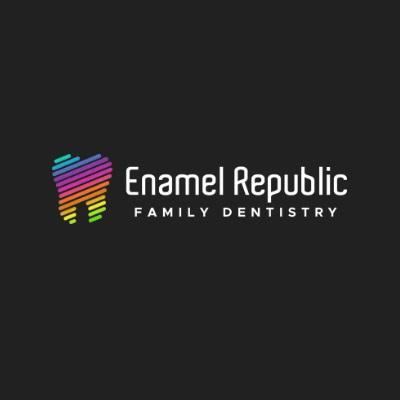The Future of Dentistry: Dental 3D Printing
3D printing, also known as additive manufacturing, is a method of producing 3-dimensional objects layer-by-layer, using a computer aided design.
Owing to its ability to print complex models using a wide range of materials, 3D printing has applications across various industries, including dental, aerospace, automotive, healthcare, food, fashion, mechanical engineering and other manufacturing industries. In recent years, the adoption of 3D printers has risen at a commendable pace, specifically in the dental industry. This is primarily due to the increasing scope of inhouse dental 3D printing, growth in digital dentistry business and rise in the demand for 3D printed products. 3D printing in dental industry is an advanced solution which produces high quality and more accurate dental products (including, crown and bridges, dentures, surgical guides and dental implants). Moreover, this process is time saving and economical for both the patients and dentists.
What are the Key Advantages of Dental 3D Printers?
The conventional dental product manufacturing methods are fraught with several challenges, including poor quality and accuracy of dental products, time-consuming printing processes and high cost of dental products. Dental 3D printing offers more treatment choices for both patients and clinicians in economical prices, while increasing the quality of care and services provided to the patients. Further, given that this is a digitalized process, the products manufactured using it can be easily customized (even the complex dental structures), and, therefore, offers more precise and accurate solutions for dental applications.
Dental 3D Printing Technologies
These printers employ various types of printing processes / technologies, including vat polymerization, polyjet printing, material extrusion and powder bed fusion process, to manufacture highly accurate restorations, orthodontic models, dentures, aligners, crowns, retainers, bridges, as well as surgical guides, from various types of materials, including resins, plastics, metals, ceramics and other materials.
Dental 3D Printers: Current Market Landscape
Presently, around 230 dental 3D printers are available for use across wide range of dental products; majority of these devices print crowns, bridges, dentures and working models. Further, more than 80% of the dental 3D printers use vat polymerization and powder bed fusion as printing process; of these, around 70% offer wavelength of 405 nm.
Dental 3D Printers: Current Developer Landscape
Currently, around 80 players are engaged in the manufacturing of dental 3D printers across the globe. The current market landscape is highly fragmented, featuring the presence of both new entrants and established players across key geographical regions; the majority of these players are based in Europe and Asia-Pacific. The below pasted donut chart, shows the distribution of dental 3D printer developers by company size and location of their headquarters.
The Increasing Interest in this Field is also Reflected in Recent Partnership Activity
Since 2018, partnership activity within the dental 3D printing domain has increased, with an annualized growth rate of 70.87%. Further, product integration agreements have captured a substantial share of the partnerships related to this domain, during the period of 2018-2022. This was followed by distribution agreements, which have captured a significant share of the partnerships inked in this domain. Further, the maximum number of partnerships in this domain was observed in 2021, followed by those signed in 2022. This rise in partnership activity in the last two years can be attributed to the increasing demand of dental 3D printers. Driven by the growing prevalence of dental diseases and rising demand for high quality dental products, the dental 3D printing market is anticipated to witness a steady growth in the foreseen future.
For additional details, please visit
https://www.rootsanalysis.com/blog/dental-3d-printing/ or email sales@rootsanalysis.com
You may also be interested in the following titles:
1. Smart Labels Market: Industry Trends and Global Forecasts, 2022-2035
2. 4D Bioprinting Market : Industry Trends and Global Forecasts, 2022-2035
About Roots Analysis
Roots Analysis is a global leader in the pharma / biotech market research. Having worked with over 750 clients worldwide, including Fortune 500 companies, start-ups, academia, venture capitalists and strategic investors for more than a decade, we offer a highly analytical / data-driven perspective to a network of over 450,000 senior industry stakeholders looking for credible market insights.
Contact:
Ben Johnson
+1 (415) 800 3415
Ben.johnson@rootsanalysis.com
The Future of Dentistry: Dental 3D Printing
3D printing, also known as additive manufacturing, is a method of producing 3-dimensional objects layer-by-layer, using a computer aided design.
Owing to its ability to print complex models using a wide range of materials, 3D printing has applications across various industries, including dental, aerospace, automotive, healthcare, food, fashion, mechanical engineering and other manufacturing industries. In recent years, the adoption of 3D printers has risen at a commendable pace, specifically in the dental industry. This is primarily due to the increasing scope of inhouse dental 3D printing, growth in digital dentistry business and rise in the demand for 3D printed products. 3D printing in dental industry is an advanced solution which produces high quality and more accurate dental products (including, crown and bridges, dentures, surgical guides and dental implants). Moreover, this process is time saving and economical for both the patients and dentists.
What are the Key Advantages of Dental 3D Printers?
The conventional dental product manufacturing methods are fraught with several challenges, including poor quality and accuracy of dental products, time-consuming printing processes and high cost of dental products. Dental 3D printing offers more treatment choices for both patients and clinicians in economical prices, while increasing the quality of care and services provided to the patients. Further, given that this is a digitalized process, the products manufactured using it can be easily customized (even the complex dental structures), and, therefore, offers more precise and accurate solutions for dental applications.
Dental 3D Printing Technologies
These printers employ various types of printing processes / technologies, including vat polymerization, polyjet printing, material extrusion and powder bed fusion process, to manufacture highly accurate restorations, orthodontic models, dentures, aligners, crowns, retainers, bridges, as well as surgical guides, from various types of materials, including resins, plastics, metals, ceramics and other materials.
Dental 3D Printers: Current Market Landscape
Presently, around 230 dental 3D printers are available for use across wide range of dental products; majority of these devices print crowns, bridges, dentures and working models. Further, more than 80% of the dental 3D printers use vat polymerization and powder bed fusion as printing process; of these, around 70% offer wavelength of 405 nm.
Dental 3D Printers: Current Developer Landscape
Currently, around 80 players are engaged in the manufacturing of dental 3D printers across the globe. The current market landscape is highly fragmented, featuring the presence of both new entrants and established players across key geographical regions; the majority of these players are based in Europe and Asia-Pacific. The below pasted donut chart, shows the distribution of dental 3D printer developers by company size and location of their headquarters.
The Increasing Interest in this Field is also Reflected in Recent Partnership Activity
Since 2018, partnership activity within the dental 3D printing domain has increased, with an annualized growth rate of 70.87%. Further, product integration agreements have captured a substantial share of the partnerships related to this domain, during the period of 2018-2022. This was followed by distribution agreements, which have captured a significant share of the partnerships inked in this domain. Further, the maximum number of partnerships in this domain was observed in 2021, followed by those signed in 2022. This rise in partnership activity in the last two years can be attributed to the increasing demand of dental 3D printers. Driven by the growing prevalence of dental diseases and rising demand for high quality dental products, the dental 3D printing market is anticipated to witness a steady growth in the foreseen future.
For additional details, please visit
https://www.rootsanalysis.com/blog/dental-3d-printing/ or email sales@rootsanalysis.com
You may also be interested in the following titles:
1. Smart Labels Market: Industry Trends and Global Forecasts, 2022-2035
2. 4D Bioprinting Market : Industry Trends and Global Forecasts, 2022-2035
About Roots Analysis
Roots Analysis is a global leader in the pharma / biotech market research. Having worked with over 750 clients worldwide, including Fortune 500 companies, start-ups, academia, venture capitalists and strategic investors for more than a decade, we offer a highly analytical / data-driven perspective to a network of over 450,000 senior industry stakeholders looking for credible market insights.
Contact:
Ben Johnson
+1 (415) 800 3415
Ben.johnson@rootsanalysis.com







